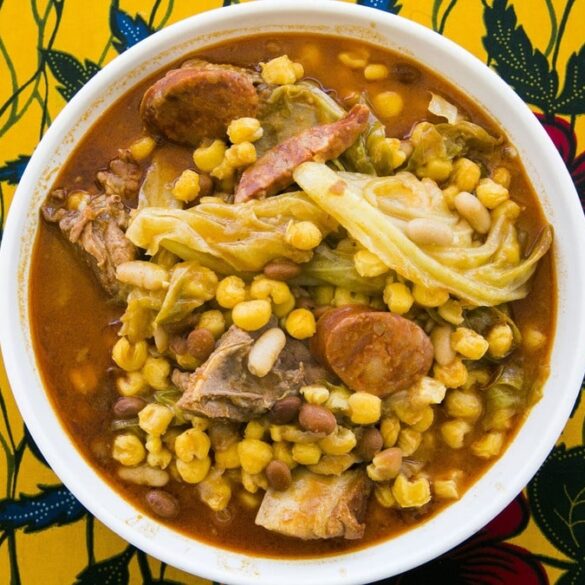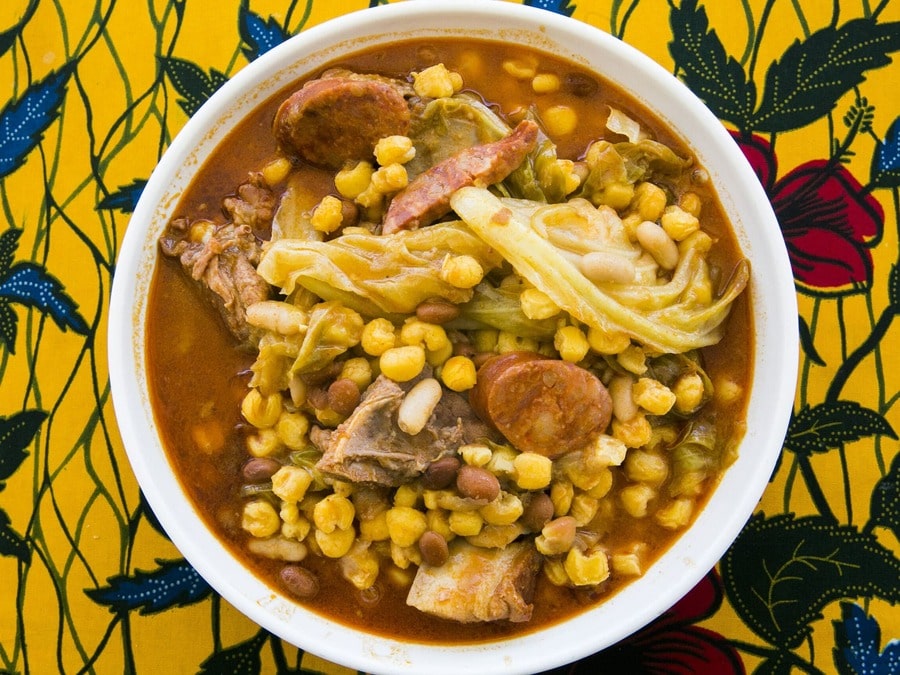Hey there, fellow food enthusiasts! Today, I want to take you on a journey to the sun-kissed islands of Cape Verde, where the vibrant culture is beautifully intertwined with the tantalizing flavors of their traditional cuisine. Picture yourself on sandy shores, with the ocean breeze in your hair and the enticing aroma of a simmering pot wafting through the air. We’re about to dive into the heart and soul of Cape Verdean gastronomy: cachupa.
Cachupa is more than just a dish; it’s a symbol of Cape Verde’s rich history, blending indigenous ingredients with the influences of Portuguese colonization and African traditions. As a proud food lover and explorer of diverse flavors, I couldn’t resist delving into the world of cachupa, eager to uncover the stories and sensations that make this dish so extraordinary.
At its core, cachupa is a humble stew crafted from a harmonious medley of ingredients. Corn, beans, and an array of meats create a symphony of flavors that will warm your soul and leave you craving for more. Picture tender chunks of beef and pork feet mingling with smoky bacon, while hearty sausages add a savory punch. The sweetness of fresh corn and the earthiness of beans create a delightful texture, adding depth to every spoonful.
What makes cachupa truly captivating is how it reflects the Cape Verdean way of life. It’s a dish born out of resourcefulness and a love for communal gatherings. In many households, families and friends come together to share stories, laughter, and a steaming pot of cachupa that has been lovingly simmered for hours. It’s a dish that embodies the spirit of unity and hospitality, inviting everyone to join in and savor the joys of good food and great company.
Now, I must confess that my culinary adventure with cachupa didn’t stop at simply savoring it. Oh no, my friends! I rolled up my sleeves, gathered the freshest ingredients, and embarked on a mission to recreate this iconic dish in my own kitchen. Along the way, I picked up tips, tricks, and flavor secrets that I’m excited to share with you, so you can bring a taste of Cape Verde into your own home.
In the upcoming blog posts, we’ll explore the traditional preparation methods, discuss ingredient variations, and even venture into modern twists on this classic dish. We’ll delve into the stories behind cachupa and uncover the cultural significance that has made it a beloved part of Cape Verdean identity.
So, are you ready to embark on this gastronomic journey with me? Get your taste buds ready, because we’re about to unlock the vibrant flavors of Cape Verdean cachupa and experience the warmth and joy it brings to the table. Let’s gather our ingredients, stoke our culinary curiosity, and dive headfirst into the world of cachupa, where every bite tells a story of tradition, love, and the vibrant spirit of Cape Verde.
Stay tuned for our next installment, where we’ll explore the essential elements that make up the heart and soul of this delightful dish. Until then, embrace the flavors of the world and keep your appetite alive!

Ingredients
- 4 cups of fresh corn kernels
- 1 can (15 oz) of beans
- 7 oz of beef
- 10.5 oz of pork feet
- 7 oz of bacon
- 2 large potatoes
- 4 sausages
- 2 cassavas
- 2 sweet potatoes
- 7 oz of cabbage
- 2 onions
- 2 bay leaves
- 2 cloves of garlic
- Olive oil (to taste)
- Salt and pepper (to taste)
Instructions
- Prepare the Meat: Cut the beef, pork feet, and bacon into bite-sized pieces. Place them in a large pot along with the sausages. Season with salt and pepper.
- Cook the Corn and Beans: In a pressure cooker, combine the fresh corn kernels and drained beans. Add one chopped onion, a drizzle of olive oil, one bay leaf, and a pinch of salt. Cook under pressure for 30 minutes.
- Combine the Ingredients: Transfer the cooked corn and beans to the pot with the meat. Add enough water to cover the ingredients and bring to a boil.
- Add the Remaining Ingredients: Once the mixture is boiling, add the peeled and diced potatoes, shredded cabbage, cassavas, sweet potatoes, and chopped onions. Stir to combine.
- Finish Cooking: Simmer the cachupa until all the ingredients are tender and fully cooked. This should take about 1 hour. Adjust the seasoning with salt and pepper as needed.
- Serve and Enjoy: Allow the cachupa to rest for a few minutes before serving. It should have a slightly thick and stew-like consistency. Serve hot and enjoy this traditional Cape Verdean dish!
Notes
- Enhance the Flavors: To elevate the flavors of this cachupa recipe, consider adding additional seasonings and herbs. For example, you can incorporate a teaspoon of paprika or a dash of cayenne pepper to add a subtle kick. Fresh herbs like thyme or parsley can also bring freshness to the dish. Experiment with different spices and seasonings to find the combination that suits your taste preferences.
- Add a Flavorful Broth: Instead of solely relying on water to cook the ingredients, try using a flavorful broth. A rich beef or vegetable broth can infuse the cachupa with depth and complexity. You can either use store-bought broth or make your own by simmering bones, vegetables, and aromatics for a homemade touch. The broth will enhance the overall taste of the dish and make it even more comforting.
- Incorporate Aromatics: Aromatics like onions, garlic, and bell peppers can add aromatic notes to the cachupa. Consider sautéing the onions and garlic before adding them to the dish. This extra step will bring out their flavors and provide a nice caramelized taste. Additionally, you can experiment with other vegetables such as carrots or celery to further enhance the overall flavor profile.
- Add a Hint of Acid: To balance the richness of the meats and starches in the cachupa, consider incorporating a hint of acidity. Squeeze fresh lemon or lime juice over the dish just before serving to brighten the flavors. The citrusy tang will add a refreshing touch and help cut through the richness, making each bite more enjoyable.
- Garnish with Fresh Herbs: Just before serving, sprinkle some freshly chopped herbs on top of the cachupa. Herbs like cilantro or green onions can add a burst of freshness and vibrant color. Not only will they enhance the visual appeal of the dish, but they will also contribute to the overall flavor profile. Feel free to experiment with different herbs and find the combination that suits your taste.



